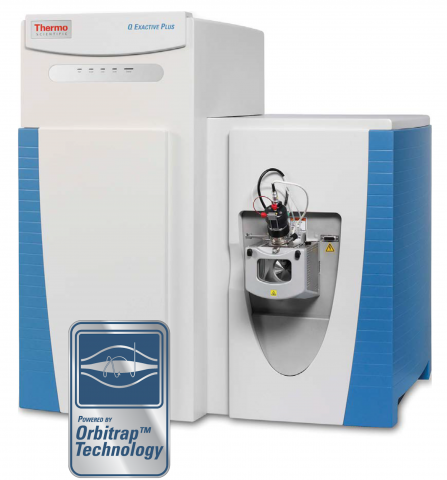Filter results
Publication Type
Tags
- (-) Spectroscopy (4)
- (-) Energy (3)
- (-) Metagenomics (3)
- (-) Proteomics (3)
- Omics (17)
- Viruses (11)
- Soil Microbiology (9)
- Health (8)
- Virology (8)
- Virus (8)
- Genomics (7)
- High Throughput Sequencing (7)
- Imaging (5)
- Mass Spectrometer (5)
- PerCon SFA (5)
- Sequencer System (5)
- Ions (4)
- Microbiome (4)
- Nanoparticles (4)
- sequencing (4)
- Electrical energy (3)
- Fungi (3)
- Mass Spectrometry (3)
- metabolomics (3)
- Microscopy (3)
- RNA Sequence Analysis (3)
- Sodium (3)
- Synthetic Biology (3)
- microbiome stability (2)
- Polymer Materials (2)
"DNA Viral Diversity, Abundance, and Functional Potential Vary across Grassland Soils with a Range of Historical Moisture Regimes" Soil viruses are abundant, but the influence of the environment and climate on soil viruses remains poorly understood. Here, we addressed this gap by comparing the...
Category
"Visualizing the Hidden Half: Plant-Microbe Interactions in the Rhizosphere" Plant roots and the associated rhizosphere constitute a dynamic environment that fosters numerous intra- and interkingdom interactions, including metabolite exchange between plants and soil mediated by root exudates and the...
Aluminate salts precipitated from caustic alkaline solutions exhibit a correlation between the anionic speciation and the identity of the alkali cation in the precipitate, with the aluminate ions occurring either in monomeric (Al(OH)4–) or dimeric (Al2O(OH)62–) forms. The origin of this correlation...
The recently developed real-time nuclear–electronic orbital (RT-NEO) approach provides an elegant framework for treating electrons and selected nuclei, typically protons, quantum mechanically in nonequilibrium dynamical processes. However, the RT-NEO approach neglects the motion of the other nuclei...
Understanding the reactivity behavior of aluminum oxyhydroxide phases, widely present in nuclear waste tanks, in radiation environments is essential to develop better nuclear waste processing approaches. Recent experiments using vibrational sum frequency generation, a surface sensitive technique...
The molecular speciation of aluminum (Al3+) in alkaline solutions is fundamental to its precipitation chemistry within a number of industrial applications that include ore refinement and industrial processing of Al wastes. Under these conditions, Al3+ is predominantly Al(OH)4–, while at high [Al3+]...
"Moisture modulates soil reservoirs of active DNA and RNA viruses" Soil is known to harbor viruses, but the majority are uncharacterized and their responses to environmental changes are unknown. Here, we used a multi-omics approach (metagenomics, metatranscriptomics and metaproteomics) to detect...
Last updated on 2024-03-03T02:26:52+00:00 by LN Anderson The Thermo Scientific™ Q Exactive™ Plus Mass Spectrometer benchtop LC-MS/MS system combines quadruple precursor ion selection with high-resolution, accurate-mass (HRAM) Orbitrap detection to deliver exceptional performance and versatility...
Last updated on 2024-03-03T02:26:52+00:00 by LN Anderson The Thermo Scientific™ Velos Pro™ Orbitrap Mass Spectrometer instrument data source combines advanced mass accuracy with an ultra-high resolution Orbitrap mass analyzer for increased sensitivity, enabling molecular weight determination for...
Bruker Daltonics SolariX Magnetic Resonance Mass Spectrometry (MRMS) instruments are available for different magnetic field strengths of 7T, 12T and 15T. The SolariX XR and 2xR instruments use magnetron control technology and a newly developed, high sensitivity, low noise preamplifier to exploit...
Category
Stanford Synchrotron Radiation Lightsource Experimental Station 14-3b is a bending magnet side station dedicated to X-Ray Imaging and Micro X-Ray Absorption Spectroscopy of biological, biomedical, materials, and geological samples. Station 14-3b is equipped with specialized instrumentation for XRF...
Category
The Physical Electronics Instruments (PHI) Quantum 2000 X-Ray Photoelectron Spectrometer (XPS) is a unique Micro-Focused Scanning X-Ray system that uses a focused monochromatic aluminum K X-ray beam that can be varied in size from as small as 10 μm in diameter to approximately 200 μm. The beam can...





